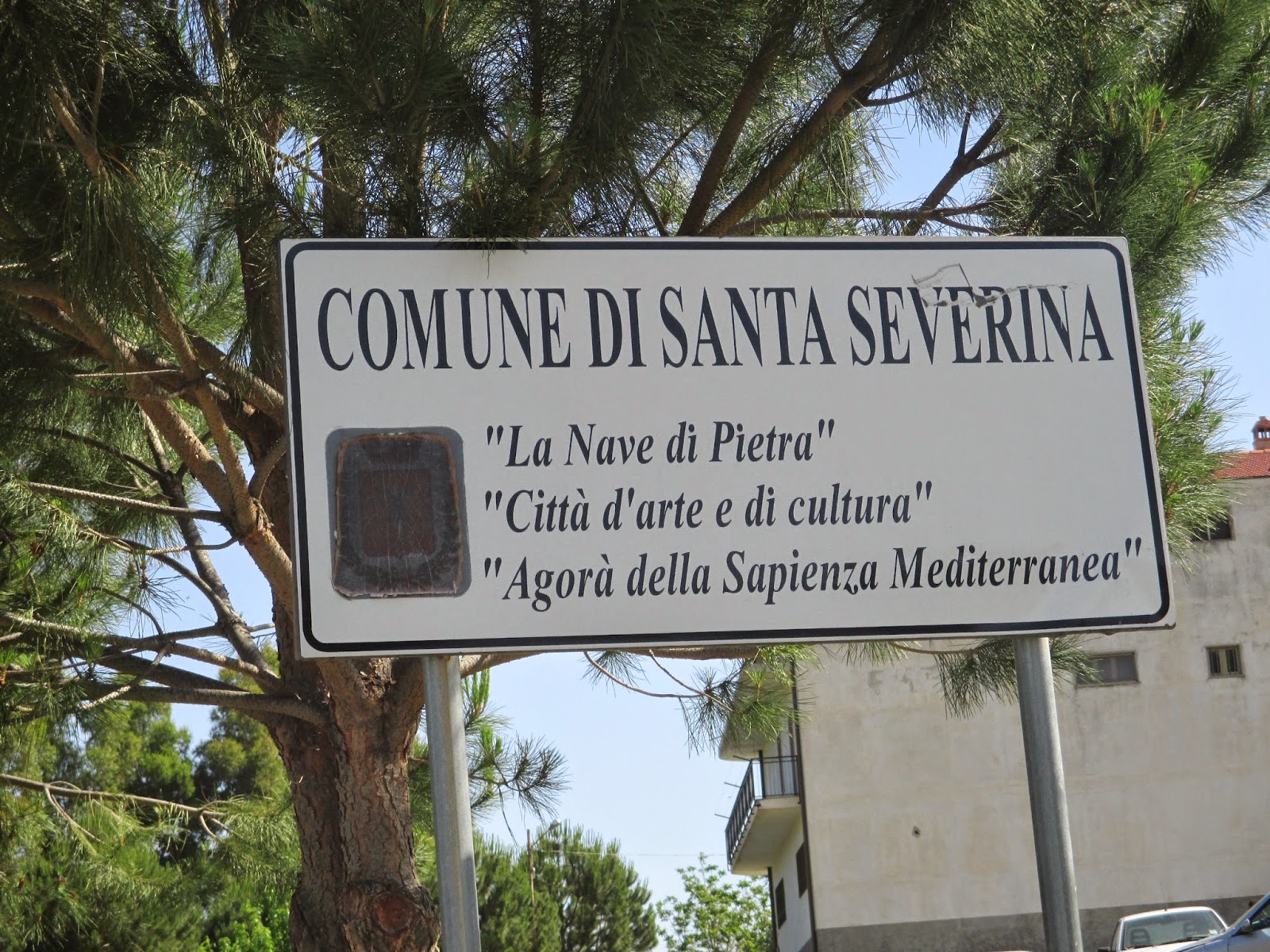Among the
most beautiful and best preserved castles in Calabria is the Norman
castle of Santa Severina, also known as Robert Guiscard’s Castle, the Norman
king who ordered its construction in the eleventh century. The castle is spread
over an area of 10,000 square meters, and is one of the oldest and best
preserved Italian military fortresses. From its beautiful cylindrical tower, it is possible to admire a magnificent view of the wide valley of the Neto River and the
hills of the Marquis of Crotone. From 1994 to 1998 the castle underwent a
massive restoration work, which unearthed archaeological finds of great
importance. The castle consists of a square keep with four cylindrical towers
at the corners flanked by four protruding bastions.
The main structure of the castle is certainly a Normans building; King Robert the Guiscard planned to erect a fortress on the rock of the ancient Siberene, to dominate the wide valley below. It has been proved that the castle was built above an existing building, as the archaeological excavations currently underway on the foundations confirm this hypothesis. In fact the excavations have revealed material dating back to the Greek period, as well as the remains of a Byzantine church, which led to the belief that there was a Byzantine kastron in turn built on top of the acropolis of the ancient Siberene. The archaeological excavations in the castle of Santa Severina have brought back to light very different structures, such as a storage tank of large size covered by a barrel vault, and a church complex whose architecture is very articulate. It may indeed be a blend of military facilities and monastic buildings, which took shape within the same Byzantine structure. In the sixteenth century, the Count Andrea Carafa ordered a substantial change of the interior spaces of the castle to be used as a residence. Since then, the castle of Robert Guiscard has been inhabited by various successive feudal lords. The halls are decorated with stucco and baroque frescoes, some of which were made by the painter Francesco Giordano.
The main structure of the castle is certainly a Normans building; King Robert the Guiscard planned to erect a fortress on the rock of the ancient Siberene, to dominate the wide valley below. It has been proved that the castle was built above an existing building, as the archaeological excavations currently underway on the foundations confirm this hypothesis. In fact the excavations have revealed material dating back to the Greek period, as well as the remains of a Byzantine church, which led to the belief that there was a Byzantine kastron in turn built on top of the acropolis of the ancient Siberene. The archaeological excavations in the castle of Santa Severina have brought back to light very different structures, such as a storage tank of large size covered by a barrel vault, and a church complex whose architecture is very articulate. It may indeed be a blend of military facilities and monastic buildings, which took shape within the same Byzantine structure. In the sixteenth century, the Count Andrea Carafa ordered a substantial change of the interior spaces of the castle to be used as a residence. Since then, the castle of Robert Guiscard has been inhabited by various successive feudal lords. The halls are decorated with stucco and baroque frescoes, some of which were made by the painter Francesco Giordano.
Church in Santa Severina





























































Breathtaking!
ReplyDelete